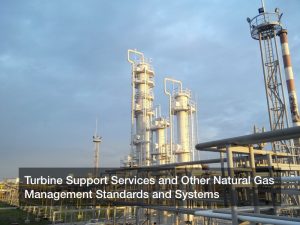
You likely know that there is a great deal of natural gas being used across the United States on a daily basis, though there is much to consider in the eventual change to renewable and sustainable energy. Residential and commercial locations need proper disposal of gas storage containers, especially because all gases, even natural, can pollute the earth. Given the potential for pollution it is important to make sure that the gasses used are held in well-sealed cylinders and turbines. With the need to keep management of the gas used for energy, turbine support services are able to make sure that the holding of gas is well-kept along with making sure that turbines and cylinders are properly disposable as well.
How do Gas Turbines Work?
With the United States as the largest producer of natural gas, extracting roughly 750 billion cubic meters of natural gas, there is much to properly process it for use around the world. With there being two types of land-based gas turbines, heavy frame engines and aeroderivative engines, there is much work to continue doing. Gas turbines work at about 800 degrees higher in temperature than steam turbines (2000 vs. 1200) and they contain three primary modules for the creation of electricity. With the complexity of gas turbines, turbine support services are essential for many users.
Natural Gas Distribution and Use Standards
If there is a need for turbine support services along with gas handling and distribution, calibration gas standards and disposable calibration gas are most well-managed in residential natural gas use. One option is custom calibration gas, while there are other needs for inspections on a regular basis to make sure that all support is upheld. Based on the amount of gas used daily, all of this can be managed by many different types of equipment and suppliers.
With all of the standards on the use being important, there is still much needed for inspection and management of all equipment. Some of the very helpful management options that come with turbine support services and the many turbine inspections include borescope inspection of gas turbines, parts removal, parts retrieval, turbine inspection reports, compressor turbine services, and many more.
Turbine Support Services
A lot can be gained from the ability to properly dispose of these calibration containers in which natural gases are held. This is one important turbine support service that can help reduce the pollution coming from natural gas use. Because all gases can be a pollutant to the earth, these management, cleaning, and support services are often helpful in taking on disposable cylinders. This is valuable because disposable cylinders can be used one time and then safely recycled or reused without damage to the environment.
The Use of Gas Turbines and Natural Gas
At this point, about 25% of all primary energy resources in the United States come from natural gas. Natural gas is much cleaner than fossil fuels in general, making it a much better option for energy sources. Of all these buildings that are powered by natural gas, almost 67 million homes are included as well as almost five and a half million businesses across the United States. Therefore, it is quite clear that natural gas is valuable to our economy and our environment as well.
While natural gas is one of the most common causes of air pollutants, it has been added to other fossil fuels and energy sources used worldwide that also pollute the air and water that everyone consumes. All of these adds to the need for turbine support services in order to help make sure that natural gas processing is as clean as possible. Therefore, disposing of gas properly, along with turbine support services to help with the management of the entire natural gas storage and distribution process for energy. Even more so, the use of gas turbines offers a great collection of all the natural gas collected nationwide to create an incredible amount of electricity throughout our nation. The gas turbines need to be managed carefully, though, because the slightest extra items, such as salt, that enters the turbine while it is working at such a high temperature can be very dangerous.
